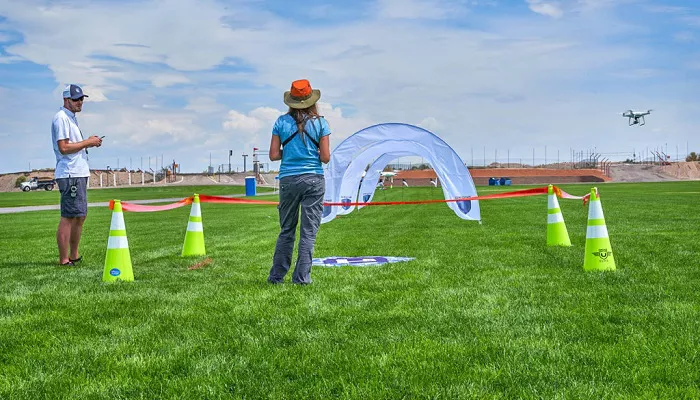Drones have become incredibly popular for both hobbyists and professionals. Whether you want to fly for fun, start a photography business, or even work in military applications, proper training is essential. This comprehensive guide will show you all the best places and methods to learn drone flying safely and legally.
Why Proper Drone Training Matters
Learning to fly drones correctly is crucial for several reasons:
- Safety: Prevents accidents and injuries
- Legal compliance: Helps you avoid hefty fines
- Skill development: Teaches advanced maneuvers
- Career opportunities: Required for commercial drone work
Types of Drone Training Programs
1. Recreational Drone Courses
Perfect for beginners who want to fly for fun. These typically cover:
- Basic flight controls
- Safety procedures
- Local regulations
- Beginner photography techniques
2. Commercial Drone Certification
Required if you want to use drones for business purposes. Includes:
- Advanced flight training
- Airspace regulations
- Risk management
- Professional operations
3. Specialized Military Training
For those interested in military applications. Some programs are featured in Military articles. These cover:
- Tactical operations
- Reconnaissance techniques
- Advanced payload management
Best Places to Learn Drone Flying
1. Flight Schools and Academies
Dedicated drone schools offer the most comprehensive training:
- Hands-on flight time with instructors
- Structured curriculum
- Certification preparation
- Often include equipment rentals
2. Community Colleges and Universities
Many educational institutions now offer drone courses:
- Credit-bearing programs
- STEM-focused curriculum
- Often more affordable than private schools
3. Online Drone Courses
Great for flexible learning options:
- Self-paced study
- Video tutorials
- Virtual simulations
- Often include certification prep
4. Manufacturer Training Programs
Many major drone companies offer specialized training:
- DJI Academy
- Autel Robotics Training
- Parrot Education
5. Local Drone Clubs and Meetups
Excellent for hands-on learning from experienced pilots:
- Free or low-cost
- Community support
- Practical flying experience
What to Look for in a Drone Training Program
Accreditation and Certification
Ensure the program meets national aviation authority standards.
Instructor Qualifications
Look for experienced pilots with teaching credentials.
Equipment Quality
Training should use modern, well-maintained drones.
Hands-on Flight Time
The best programs offer significant practical experience.
Safety Record
Research the school’s safety history and protocols.
Cost of Drone Training Programs
Prices vary widely depending on the program type:
- Recreational courses: $100-$500
- Commercial certification: $1,000-$3,000
- University programs: $500-$5,000 per semester
- Military-grade training: $5,000+
Free Learning Resources
Several options for those on a budget:
YouTube Tutorials
Thousands of free instructional videos available.
FAA/CASA/EASA Online Materials
Regulatory bodies provide free learning resources.
Drone Simulators
Software programs that let you practice virtually.
Library Resources
Many libraries now offer drone-related materials.
Choosing the Right Drone for Learning
Consider these factors when selecting a training drone:
Beginner-Friendly Features
- Auto-hover
- Obstacle avoidance
- Return-to-home function
Durability
Look for models that can withstand crashes.
Repair Costs
Cheaper replacement parts are better for learners.
Flight Time
Longer battery life means more practice time.
Essential Skills to Master
Basic Flight Maneuvers
- Takeoff and landing
- Hovering
- Figure-eight patterns
Emergency Procedures
- Loss of signal response
- Low battery protocols
- Obstacle avoidance
Advanced Techniques
- Waypoint navigation
- First-person view (FPV) flying
- Cinematic camera movements
Drone Certification Requirements
Most countries require certification for commercial operations:
United States (FAA Part 107)
Knowledge test and background check required.
Australia (CASA RePL)
Remote Pilot License needed for commercial work.
European Union (EASA A1/A3)
Different certifications based on drone category.
Practicing Safely as a Beginner
Choose Open Areas
Large fields away from people and obstacles.
Start With Basic Models
Begin with inexpensive, durable drones.
Use Propeller Guards
Protects both your drone and surroundings.
Fly in Good Weather
Avoid wind, rain, and extreme temperatures.
Common Mistakes to Avoid
Skipping the Manual
Always read your drone’s documentation first.
Ignoring Local Laws
Research regulations before flying anywhere.
Overestimating Skills
Progress gradually to more advanced flying.
Neglecting Maintenance
Regular checks prevent mid-flight failures.
Conclusion
Learning to fly drones properly opens up a world of possibilities, from exciting hobbies to lucrative careers. Whether you choose formal flight school, online courses, or community-based learning, proper training ensures safe, legal, and skilled operation. Remember that drone technology and regulations continue to evolve, so ongoing education is key to staying current in this dynamic field. With the right training approach and dedication, you’ll be mastering the skies in no time.


